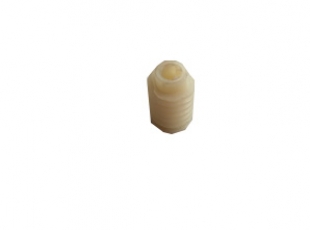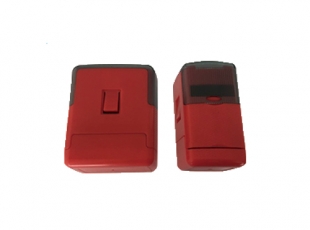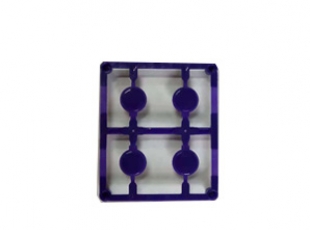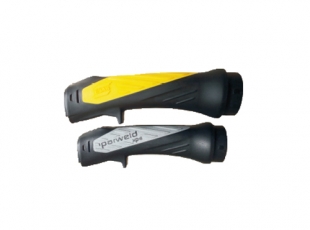Characteristics of high-precision mold accessories
In addition to high strength and toughness, the surface performance of high-precision mold accessories is critical to the working performance and service life of high-precision mold accessories. It is very limited and uneconomical to rely solely on the improvement and enhancement of matrix materials to improve these properties. However, through surface treatment technology, we can often get twice the result with half the effort, which is the reason why surface treatment technology has been developed rapidly. Die polishing technology is an important part of die surface engineering and an important post-treatment process in die manufacturing. Because there are still some problems in domestic polishing technology and materials, for example, injection molds for point and shoot cameras, CD, VCD discs and injection molds with high transparency requirements for tools still rely on imports.
The mirror mold material is not only a problem of chemical composition, but also a series of advanced processes such as vacuum degassing, argon protecting ingot, vertical continuous casting and rolling, and flexible forging are required to be used during smelting, so that the mirror mold steel has a series of advantages such as fewer internal defects, fine particle size of impurities, high dispersion, fine metal grain size, and good uniformity, so as to meet the requirements of mold steel polished to the mirror. The surface treatment technology of mold accessories is a systematic engineering that changes the shape, chemical composition, microstructure and stress state of the surface of high-precision mold accessories through surface coating, surface modification or composite treatment technology to obtain the required surface properties. Nitriding process includes gas nitriding, ion nitriding, liquid nitriding, etc. In each nitriding method, there are several nitriding technologies, which can meet the requirements of different steel grades and different workpieces. From the way of surface treatment, it can be divided into chemical method, physical method, physical chemical method and mechanical method.
It is worth noting that the mold surface polishing is not only affected by the polishing equipment and technology, but also by the mirror degree of the mold material. This has not attracted enough attention, that is, the polishing itself is restricted by the mold material. Although new treatment technologies aimed at improving the surface performance of precision die fittings are emerging, nitriding, carburizing and hardening film deposition are mainly used in the manufacturing of high-precision die fittings. As the nitriding technology can form a surface with excellent performance, and the nitriding process has a good coordination with the quenching process of high-precision die fitting steel, at the same time, the nitriding temperature is low, there is no need for intense cooling after nitriding, and the deformation of high-precision die fittings is very small, therefore, the surface strengthening of high-precision die fittings is early and widely used. In addition to high strength and toughness, the surface performance of high-precision mold accessories is critical to the working performance and service life of high-precision mold accessories. It is very limited and uneconomical to rely solely on the improvement and enhancement of matrix materials to improve these properties. However, through surface treatment technology, we can often get twice the result with half the effort, which is the reason why surface treatment technology has been developed rapidly. Die polishing technology is an important part of die surface engineering and an important post-treatment process in die manufacturing. Because there are still some problems in domestic polishing technology and materials, for example, injection molds for point and shoot cameras, CD, VCD discs and injection molds with high transparency requirements for tools still rely on imports.
The mirror mold material is not only a problem of chemical composition, but also a series of advanced processes such as vacuum degassing, argon protecting ingot, vertical continuous casting and rolling, and flexible forging are required to be used during smelting, so that the mirror mold steel has a series of advantages such as fewer internal defects, fine particle size of impurities, high dispersion, fine metal grain size, and good uniformity, so as to meet the requirements of mold steel polished to the mirror. The surface treatment technology of mold accessories is a systematic engineering that changes the shape, chemical composition, microstructure and stress state of the surface of high-precision mold accessories through surface coating, surface modification or composite treatment technology to obtain the required surface properties. Nitriding process includes gas nitriding, ion nitriding, liquid nitriding, etc. In each nitriding method, there are several nitriding technologies, which can meet the requirements of different steel grades and different workpieces. From the way of surface treatment, it can be divided into chemical method, physical method, physical chemical method and mechanical method.
It is worth noting that the mold surface polishing is not only affected by the polishing equipment and technology, but also by the mirror degree of the mold material. This has not attracted enough attention, that is, the polishing itself is restricted by the mold material. Although new treatment technologies aimed at improving the surface performance of precision die fittings are emerging, nitriding, carburizing and hardening film deposition are mainly used in the manufacturing of high-precision die fittings. As the nitriding technology can form a surface with excellent performance, and the nitriding process has a good coordination with the quenching process of high-precision die fitting steel, at the same time, the nitriding temperature is low, there is no need for intense cooling after nitriding, and the deformation of high-precision die fittings is very small, therefore, the surface strengthening of high-precision die fittings is early and widely used.
1The precision of the mold will be higher and higher
2021-12-03

2Characteristics of high-precision mold accessories
2021-03-13

3Precision die meets eight requirements of process performance
2020-01-03

4What are the characteristics of precision injection molding products?
2019-10-09

5What is precision injection molding processing?
2019-10-29

6The development of precision plastic gear mold industry will become a worldwide trend
2019-09-02







